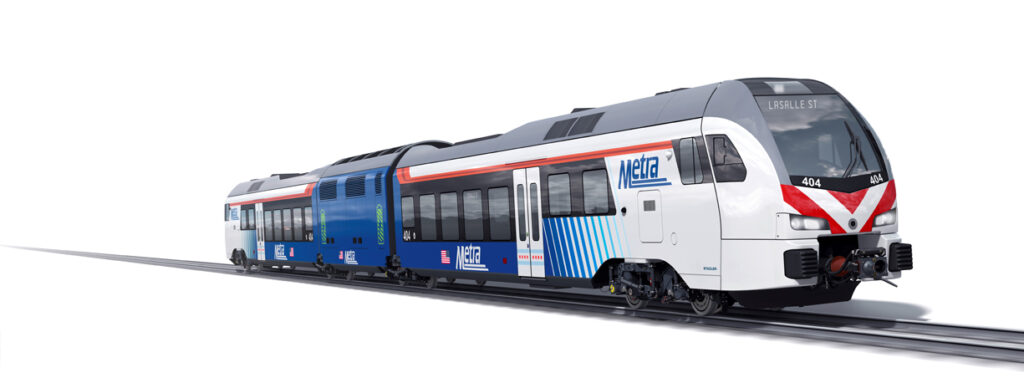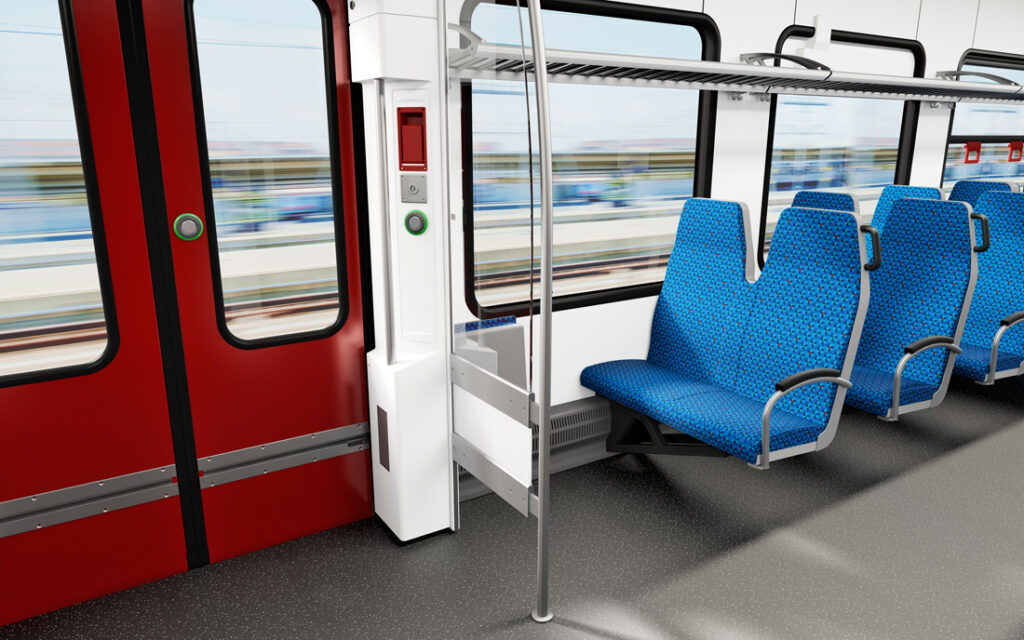All about the community of model railroading and rail enthusiasm
February 27, 2024
Chicago’s Commuter Rail Division of the Regional Transportation Authority last week approved a contract to buy zero-emission, battery-powered train sets. Metra will be among the first in the nation to operate this innovative technology.
Metra’s Board of Directors approved the contract with Salt Lake City-based Stadler U.S. It includes a $154 million order for eight two-car, battery-powered sets, including engineering, training and spare parts.
The contract has options costing an additional $181.4 million for eight more sets and up to 32 trailer cars, which could be added to the two-car sets to create three- or four-car configurations.

Metra received a $169.3 million federal Congestion Mitigation and Air Quality Improvement (CMAQ) grant for the purchase, which will cover the base order and some of the options. Funds from the state PAYGO program will fund the grant’s required local 20 percent match.
The announcement was made the same day that Metra was awarded $100 million for a separate request to buy 50 modern, multilevel rail cars to replace older cars.
The battery-powered train sets will have low-level boarding and be equipped with ADA-compliant lifts. Each set will seat 112 people, and each additional trailer car will provide seating for about 46 people.
Single-level sets will have open gangways so riders can move from car to car. Passenger information signs, bike racks, luggage racks and USB outlets will be installed. Half of the trailer cars, if purchased, will include ADA-accessible bathrooms.

The first sets are expected to arrive in 2027-2028.
Metra believes the battery-powered train sets could be a more economical and environmentally friendly way to provide the same level of service or better, particularly during off-peak times. They could play a significant role in helping Metra achieve its vision to provide more frequent all-day regional rail service.
“This purchase demonstrates Metra’s commitment to cleaner power, to quieter trains, and to thinking outside the box as we plan for our future,” said Metra CEO Jim Derwinski. “We are excited to bring this technology and its efficiency, flexibility and reliability to Chicago and our riders.”
The range on a fully charged set is expected to be 45-65 miles. Charging time will vary, but going from a 20 percent charge to 80 percent – enough for the train set to operate – is expected to take 20-30 minutes. Exact cost of the charging infrastructure is yet to be determined.
The train sets are expected to run 16.4 miles between LaSalle Street and Blue Island on the Beverly Branch of the Rock Island Line and improve the air quality in economically disadvantaged neighborhoods on the South Side of Chicago and in the near south suburbs.
The train sets will allow Metra to retire some of its oldest diesel locomotives, which are well beyond their useful life, as well as retire many of the railroad’s oldest rail cars.
Final assembly will be done in Salt Lake City.
Also, METRA will receive funds to buy multilevel rail cars as part of $631 million in Federal Railroad Administration grants to improve rail transit safety and reliability. The new cars will feature updated passenger safety, accessibility and comfort amenities.
METRA was one of three agencies to receive the money. The FRA awarded $214 million to the Maryland Department of Transportation Maryland Transit Administration to buy 52 new light rail vehicles to replace older vehicles that have been in service for more than 25 years. The Southeastern Pennsylvania Transportation Authority was granted approximately $317 million to buy up to 200 new rail cars to replace older rail cars operating along the Market Frankford Line, the most heavily used line in the system.